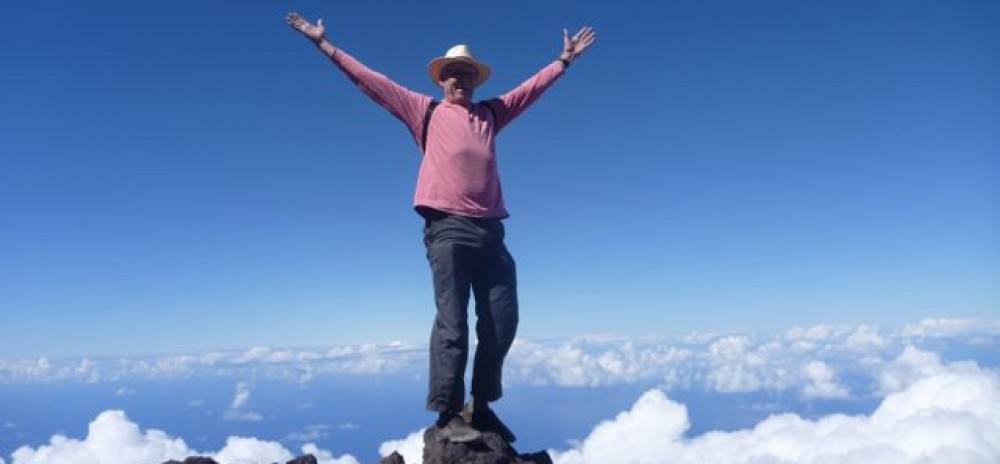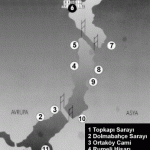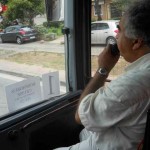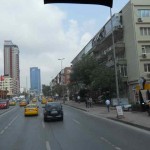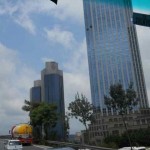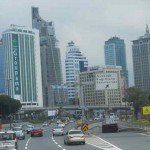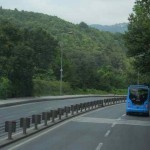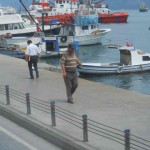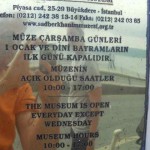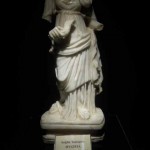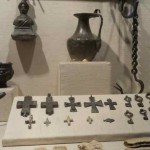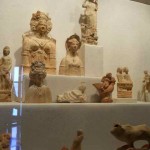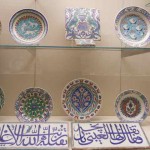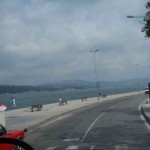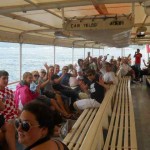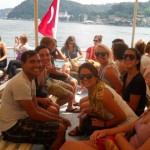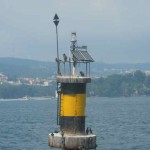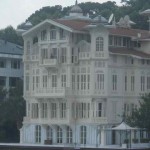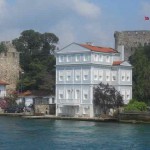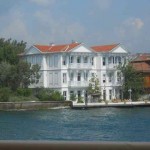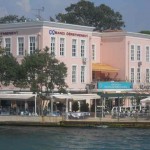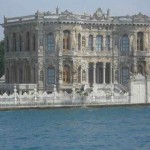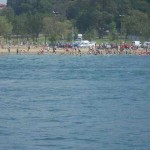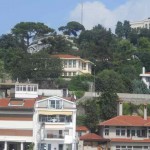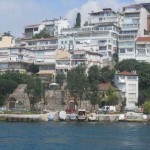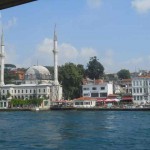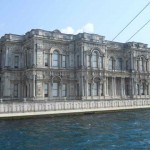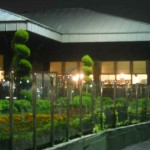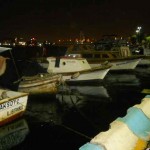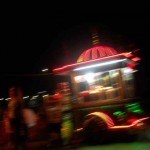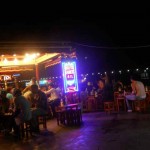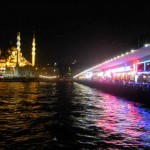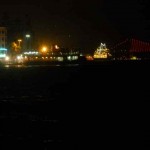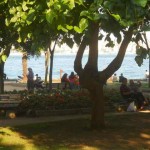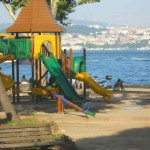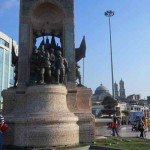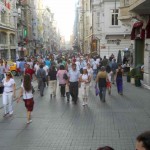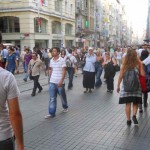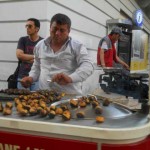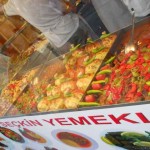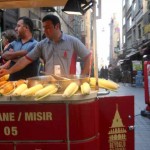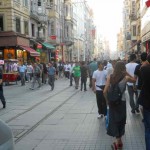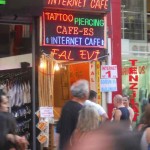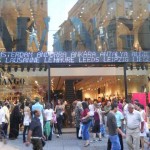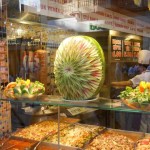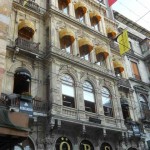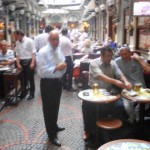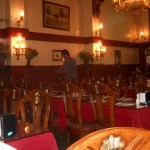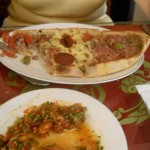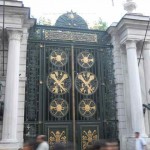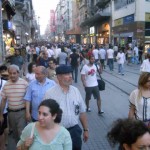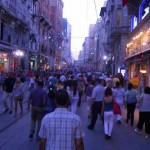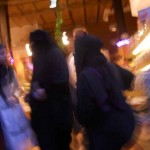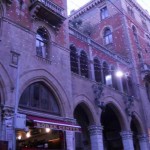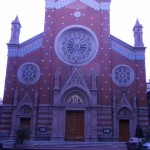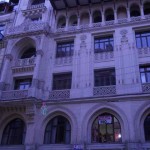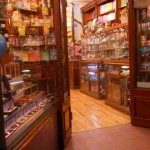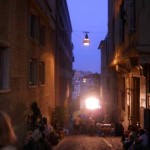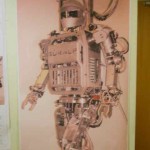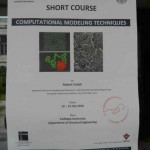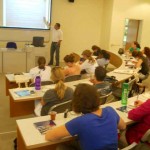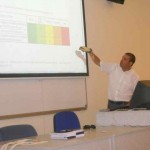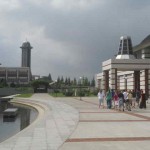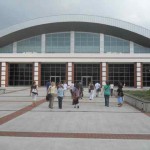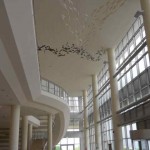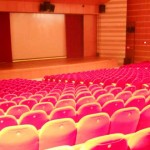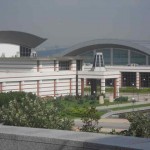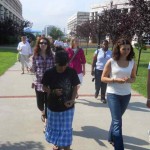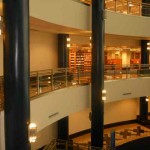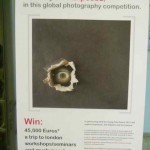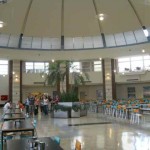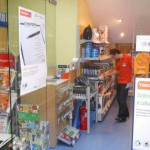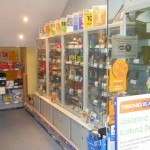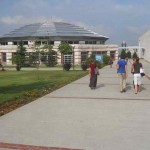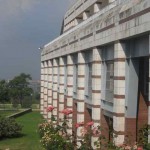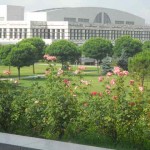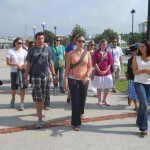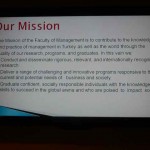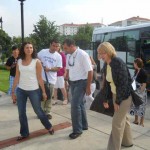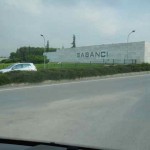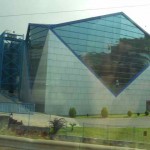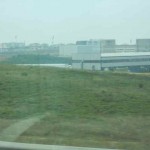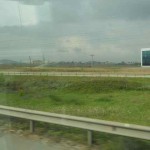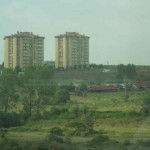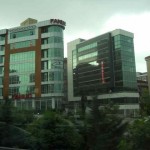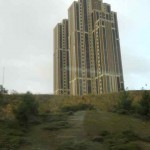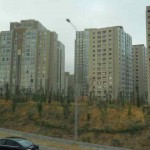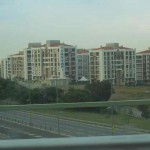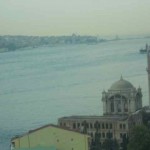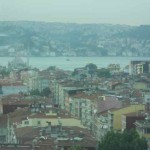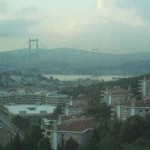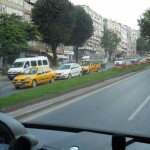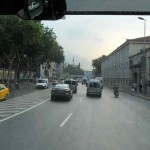Thursday, July 22
On Thursday we took a bus ride up the coast and a boat ride back down.
We went as far up the Bosporus as Büyükdere and visited the Sadberk Hanım Museum.
The museum has two parts, archeological and ethnographic. Kathy thought the archeological section was fascinating; with my pathetic lack of interest in antiquities I found it only somewhat interesting. I found the ethnographic section very interesting. There was a lot of interesting ceramics, metalwork, and costumes. The museum store was nice as well. Got a few gifts there. No photography was allowed. Maybe I can scan a few pages from the museum book I bought to display?
After the museum visit (somewhat rushed), we got back aboard the buses for a short ride to our tourist boat. We headed downstream towards the Sea of Marmara. We visited both shores, looking at expensive homes, former palaces, fortifications, and a few public beaches.
After we got back to the Explorer, Kathy and I headed out to look for that “Bright Yellow” fish restaurant mentioned in the last post. Finding it less than we hoped we moved on and came to this nice family-type restaurant on the banks of the Golden Horn. The Golden Horn is a bay that splits the European side of Istanbul into two parts. It gets its name from the color when the sun sets over it. This restaurant seemed to be run by the municipality. Part of the “park service” maybe? We were struggling with the menu when a waiter brought us a picture menu. He told us he and his father had both served with the United Nations Forces and he helped us pick out some dishes. I asked for spicy… and he said “really spicy?” I said yes and he said he would order me something that wasn’t on the menu. For Kathy he recommended the steamed fish. Kathy’s fish was very tasty, and my dish wound up being a meat stew in a ceramic dish. It was good, but not very spicy. We had desert and tea.
There were some toddlers running around the restaurant. Very cute. The other guests and the waitstaff seems very tolerant, dodging the kids with their trays and avoiding tripping over them.
We found our way down to the western end of the Galata Bridge. There is a level of the bridge below the traffic level with restaurants lining each side. We walked on this level, passing up the generous offers from each restaurant staff (“Look what we have here! Why don’t you stop?”). Once across the bridge we caught a taxi back to the ship.
- Sadberk Museum location
- Our guide
- Driving northeast
- The Bosporus
- The Museum
- Antiquities section
- Ethnographic section
- Back to the Strait
- Our tour boat
- Dinner restaurant in park
- Golden Horn
- Hagia Sophia and the Galata Bridge
- M/V Explorer from the Galata Bridge
